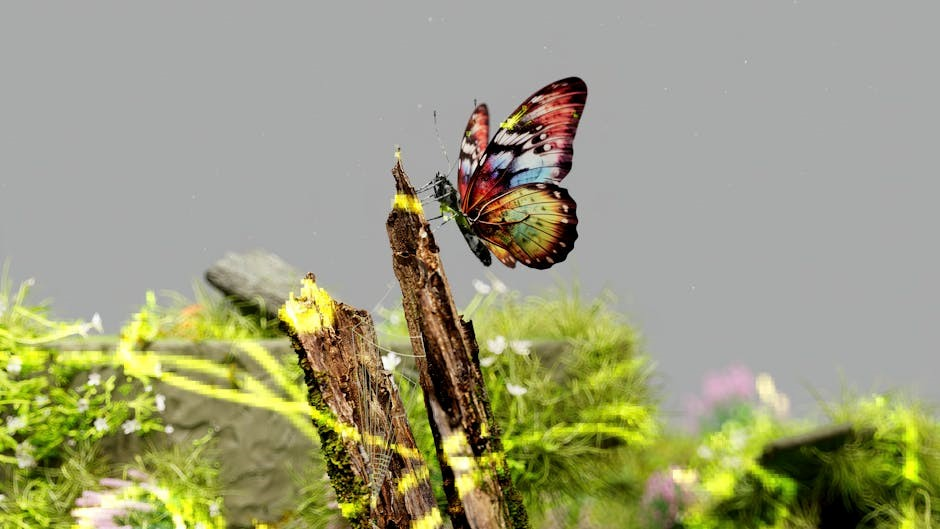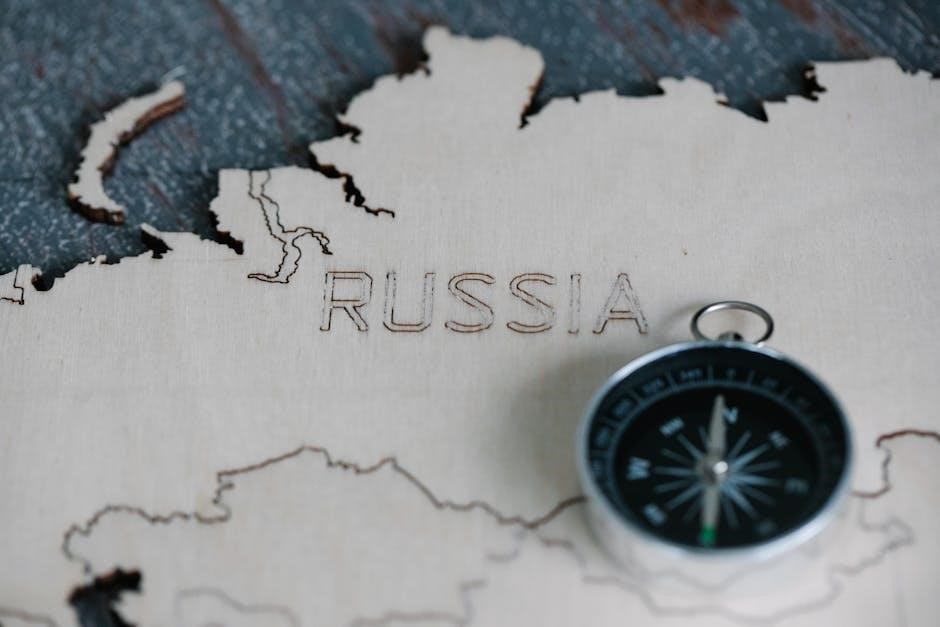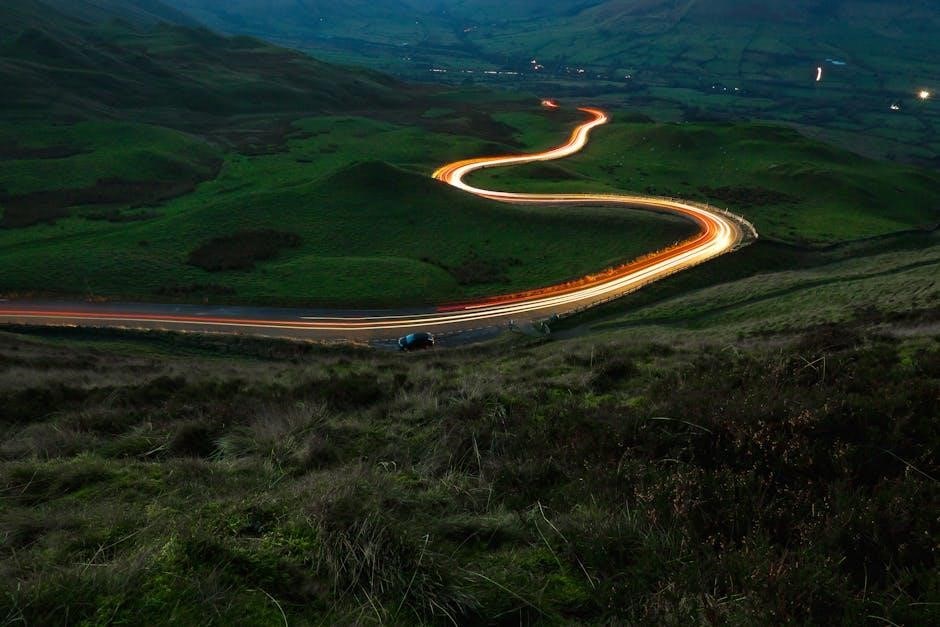Truffles are rare, underground fungi prized for their unique flavors and aromas. Mastering their identification is essential for culinary enthusiasts and foragers to ensure authenticity and safety.
Understanding the Basics of Truffles
Truffles are rare, underground fungi with a distinctive, aromatic flavor. They grow symbiotically with tree roots in specific soil conditions. Truffles are prized for their unique taste and texture, often described as earthy, nutty, or umami-rich. Their appearance varies by species, with colors ranging from white to dark brown. Truffles are highly valued in culinary circles, making them a sought-after delicacy. Understanding their characteristics is key to identifying and appreciating these elusive fungi effectively.
Why Truffle Identification is Important
Accurate truffle identification is crucial for ensuring culinary safety, quality, and value. Misidentifying species can lead to disappointment or even harm, as some fungi are inedible or toxic. Correct identification ensures the proper use of truffles in cooking, preserving their unique flavors and aromas. It also protects the ecological balance by avoiding over-harvesting of rare species. Understanding truffle types and qualities is essential for chefs, foragers, and enthusiasts to fully appreciate these delicacies and maintain their high culinary and economic value.

Where Truffles Grow
Truffles thrive in specific regions like West Europe, the Pacific Northwest, and Australia, often near chestnut, oak, and pine trees in moist, warm, forested areas with suitable soil conditions.
Geographical Regions for Truffle Hunting
Truffles are primarily found in specific regions worldwide, including France, Italy, Spain, and Australia. The Pacific Northwest in the U.S. also hosts native species. These fungi thrive in moist, warm forests near tree species like oak, chestnut, and hazelnut. Regions with alkaline soils and temperate climates are ideal for growth. Truffle hunting often occurs in areas with a history of cultivation or wild growth, making local guides and expertise invaluable for successful foraging.
Tree Associations and Soil Conditions
Truffles form symbiotic relationships with specific tree species, such as oak, chestnut, and hazelnut. They thrive in well-drained, alkaline soils with low organic matter. The fungi typically grow near tree roots, preferring areas with moderate moisture and warm temperatures. Soil pH levels between 7.5 and 8.3 are ideal for truffle development. Avoid areas with cedar or maple trees, as truffles do not associate with these species. Understanding these associations aids in pinpointing potential truffle locations.

Types of Truffles
Truffles come in three main varieties: white, black, and burgundy. Each type offers unique flavor profiles, from the pungent white to the earthy black and distinctive burgundy.
White Truffles: Characteristics and Flavor
White truffles are renowned for their pungent, earthy aroma and delicate flavor, often described as having notes of shallot and garlic. Their white interior contrasts with a rough, warty exterior. Found primarily in Italy, they are highly prized in fine cuisine, typically shaved over dishes to enhance their aromatic profile. Freshness is key, as their flavor diminishes quickly, making them a rare and luxurious ingredient.
Black Truffles: Distinctive Features
Black truffles are known for their robust, earthy flavor and dark, smooth exterior. Found in regions like France and Spain, they thrive near oak and hazelnut trees. Their interior is dark with white veins, giving a distinctive marbled appearance. Highly prized in cuisine, they add depth to dishes when shaved or infused in oils. Their umami-rich profile makes them a staple in fine dining, though less delicate than white truffles, they are equally sought after for their bold, lingering taste.

Burgundy Truffles: Unique Qualities
Burgundy truffles, known as Tuber uncinatum, boast a distinctive earthy, nutty flavor with hints of fruitiness. Their dark brown, warty exterior contrasts with a pale yellow interior flecked with brown veins. Often smaller than black truffles, they thrive near oak and hazelnut trees in cooler climates. Prized for their aromatic depth, they are typically shaved over dishes to enhance flavor. Their seasonality and nuanced profile make them a favorite in French cuisine, balancing robust and refined notes.

Identifying Truffles
Truffles are identified by their unique aroma, texture, and appearance. Their firm, warty exterior and rich, earthy scent set them apart from other fungi. Each species has distinctive characteristics.
Physical Characteristics: Shape, Size, and Color
Truffles vary in shape, from round to irregular. Sizes range from pea-sized to several inches in diameter. Colors differ by species: white truffles are pale yellow to brown, while black truffles are dark with a white marbled interior. The exterior is typically warty, providing a unique texture that aids in identification. These physical traits are crucial for distinguishing between species and ensuring authenticity. Proper observation enhances foraging success and culinary use.
Texture and Consistency: What to Look For
Truffles should feel firm and slightly elastic to the touch, avoiding softness or hardness. Fresh truffles are turgid, with a warty exterior and a smooth, veiny interior. Avoid those that are too soft, as this indicates rot. The texture varies slightly by species, but consistency is key for quality. A healthy truffle will retain its shape when pressed gently, ensuring its integrity for culinary use.
The Role of Smell in Truffle Identification
The scent of truffles is a critical factor in identification, as their aroma varies significantly by species. White truffles emit a pungent, earthy fragrance, while black truffles have a more robust, umami-like smell. The intensity of the scent often indicates freshness and quality; Truffle dogs are trained to detect these distinctive odors, aiding in location and verification. A strong, pleasant smell is a hallmark of a premium truffle, making olfactory examination essential for enthusiasts and chefs alike.

Tools and Methods for Truffle Hunting
Truffle hunting often relies on trained dogs or pigs, equipped with keen senses to detect subtle scents. Specialized tools like rakes and brushes aid in careful extraction, preserving the fungi’s integrity and ensuring sustainable practices. These methods, combined with expert knowledge, enhance the efficiency and success of truffle foraging adventures.

Trained Dogs and Pigs: Their Role in Truffle Hunting
Trained dogs and pigs play a vital role in truffle hunting, using their keen sense of smell to locate these elusive fungi underground. Dogs, in particular, are favored for their trainability and agility, while pigs instinctively seek truffles due to their natural attraction. Handlers work closely with these animals, rewarding them to maintain focus and efficiency during searches. This method ensures truffles are found without extensive damage to their surrounding environment, making it a sustainable and effective approach to truffle foraging.
Equipment and Techniques for Locating Truffles
Truffle hunting relies on specialized tools and techniques to locate these underground delicacies. Traditional methods involve rakes, trowels, and sieves to gently unearth truffles without causing damage. Modern approaches incorporate GPS and drones to map potential areas. Trained dogs and pigs remain indispensable, while tools like the Italian coradella rake help uncover truffles in dense soil. Ethical practices emphasize working with nature to preserve the truffle ecosystem and ensure sustainable harvesting for future generations.

Seasonal Timing and Weather Factors
Truffles thrive in specific seasons and weather conditions, typically growing in moist, warm forests after heavy rainfall. Ideal timing varies by species, ensuring optimal flavor and aroma.
Best Times of the Year to Forage for Truffles
Truffle foraging varies by species, but most thrive in cooler months. White truffles are typically found from October to December, while black truffles peak in winter. Moist, warm forests after heavy rainfall create ideal conditions. Timing is crucial for flavor and aroma, as mature truffles emit strong scents, making them easier to locate with trained dogs or pigs. Seasonal knowledge ensures successful foraging experiences and high-quality finds.
How Weather Conditions Affect Truffle Growth
Weather significantly influences truffle growth, with ideal conditions being moderate temperatures, humidity, and rainfall. Heavy rainfall followed by warm, moist soil fosters growth, while droughts or extreme weather can hinder development. Truffle formation relies on symbiotic relationships with tree roots, which thrive in stable, temperate climates. Seasonal patterns, such as winter for black truffles, are closely tied to weather cycles, making timing crucial for successful foraging and ensuring the fungi reach maturity.

Storing and Preserving Truffles
To maintain truffle quality, store them in airtight containers with rice or paper towels to absorb moisture. Refrigerate at 35-45°F (2-7°C) for up to 1 week to preserve flavor and aroma.
Best Practices for Maintaining Truffle Quality
Ensure truffles remain fresh by storing them in airtight containers with rice or paper towels to absorb moisture. Keep them refrigerated at 35-45°F (2-7°C) to preserve flavor and aroma. Avoid freezing, as it can degrade the truffle’s texture and potency. Use within a week for optimal quality. Handling gently and avoiding exposure to heat or light further maintains their integrity and fragrance.
How to Preserve Truffles for Later Use
Truffles can be preserved by freezing them whole or in slices, ensuring their aroma and flavor remain intact for months. Store them in airtight containers or wrap tightly in plastic wrap and place in a sealed freezer bag. Another method is infusing truffle fragments in oils or butters, which captures their essence for extended use in culinary creations. Proper preservation allows year-round enjoyment of these culinary treasures.

Cooking with Truffles
Cooking with truffles elevates dishes to new heights, adding a luxurious and aromatic flavor. Truffle oils, butters, and shaved truffles are popular in fine cuisine, enhancing pastas, eggs, and meats.
Pairing Truffles with Foods: Tips and Recipes
Pairing truffles with foods requires attention to their delicate flavor. White truffles shine in simple dishes like pasta with butter or eggs, while black truffles enhance meats and cheeses. Shaving truffles over dishes just before serving preserves their aroma. Truffle oils and butters offer a convenient way to infuse their flavor into everyday recipes, making them a versatile ingredient for both novice and experienced chefs.
Enhancing Dishes with Truffle Flavor
Truffle flavor elevates dishes through subtle yet impactful techniques. Shaving fresh truffles over pasta, risotto, or eggs adds an aromatic punch. Infusing oils, butters, or salts with truffle essence provides a versatile way to incorporate their flavor. Truffle honey and cheese also serve as delightful enhancements. These methods allow chefs to enhance dishes without overpowering them, making truffle-infused creations both elegant and accessible for any culinary skill level.
Mastering truffle identification and use offers a rewarding journey into nature and culinary art, unlocking the secrets of these prized fungi for unforgettable epicurean experiences.
Final Thoughts on Truffle Identification and Use
Truffle identification is a captivating journey that combines nature, culinary art, and tradition. By mastering the skills to identify and use truffles, enthusiasts can unlock their full flavor potential while respecting the environment. Whether you’re a chef, forager, or food lover, truffles offer a world of gastronomic delight. Embrace ethical practices, savor their unique qualities, and enjoy the rich cultural and culinary significance these fungi bring to the table.
